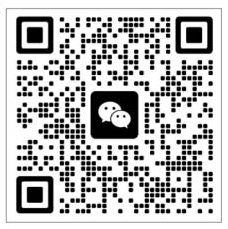E-mail:Machine@chinaventech.com Expert for pre insulated duct CNC cutting machine.
Foreign scientists have proved through laser experiments that time can be turned back
The latest research shows that at the quantum level, future events may affect past events. This is a weird phenomenon that scientists have recently observed in the field of quantum mechanics.
The clock at St. Pancras International Railway Station in London, UK
Research team members Professor Andrew Trustcott and Dr. Roman Kakimov used laser to improve u0026'double slit experimentu0026'. They fired high-speed helium atoms through the first laser grating and measured whether the state of the helium atoms changed if the second grating appeared.
In the standard u0026'Double Slit Experimentu0026Light band, which is a typical phenomenon in which photons travel in the form of waves (below). According to foreign media reports, in modern physics, there is a core principle that light can only advance in one direction, that is, only the past can affect the future, and the future cannot affect the past. However, scientists from the Australian National University have recently discovered through experiments that at quantum energy levels, this core principle may not work. Researchers believe that this means that future events can affect events that have already occurred, and light can move forward or backward. The Australian National University research team has conducted in-depth research on the strange behavior of particles in quantum mechanics. In the quantum world, a moving object may exist in two states at the same time, namely particles and waves. However, it is impossible for us to see them in both states at the same time. This is because when scientists try to observe visible photons or fast-moving atoms, they appear either as particles or as waves. However, in a recent experiment conducted by the research team, scientists discovered a strange phenomenon. When they tried to observe an atom to determine whether what they were seeing was in the form of waves or particles, the phenomenon of wonder occurred. According to Andrew Trustcott, the head of the research team and a physicist at the Australian National University, u0026 'At the quantum level, if you are not looking at it, the entity does not exist. These atoms have not moved from A to At B. Their wave-like or particle-like behavior will only appear when they are observed at the end of the journey. u0026' The research results of the scientists are published in the journal Natural Physics. Their experiment is based on the theoretical idea put forward by the famous quantum physicist John Wheeler in 1978, namely the 'delayed choice thought experiment'. u0026'Delayed choice thought experimentu0026' is actually an improved version of u0026'double slit experimentu0026When a beam of light passes through a slit and hits the wall behind, the photon appears to behave as a particle. When the second slit is introduced, interference light bands appear, and the photons seem to exhibit wave properties again. John Wheeler suggested adding a second curtain wall with slits behind the first curtain wall in order to see if the state of light can remain stable when passing through the two curtain walls. However, so far, this experiment seems unlikely to be completed. The Australian National University research team slightly modified John Wheeler’s thinking to make experiments possible. Instead of using photons, they used helium atoms to pass through a grating formed by a laser beam rather than through a physical curtain wall. In this way, when the high-speed atom passes through the second pass, the researchers can accurately observe what happened to it. The researchers found that without the second grating, the atoms would travel along a single path, behaving like particles. But when both gratings are present, the atoms will travel along multiple lines, some of which behave like waves. Before the introduction of the second grating, the researchers measured the route of helium atoms passing through the first grating. Experiments have found that the second grating, which has not been introduced but may be introduced, has an impact on the state of the particles. Andrew explained, u0026'This shows that if helium atoms really follow a specific route, the next future measurements will affect the atomic route.u0026' Researchers believe that this shows that future events are affecting the past of the atom. .
(Source: Sina Technology)
Quick Links
Products
Contact Us


